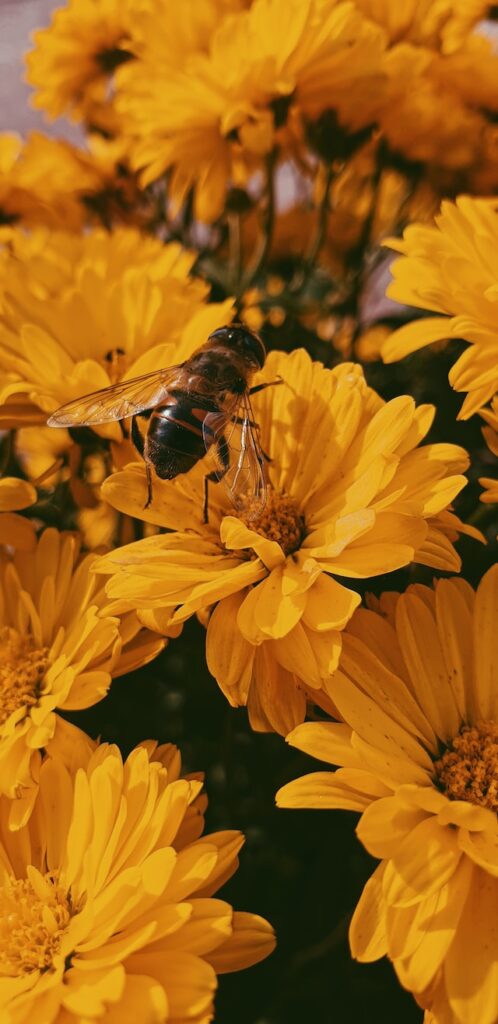
Have you noticed those beautiful little birds in your home garden that pay regular visits? These birds come looking for the nectar of flowers or seeking shelter on your trees. Birds and other animals including wind are considered natural pollinators of plants because these help plants in pollination. Bright vibrant flowers with beautiful fragrances serve the function of attracting these pollinators.
Role of pollinators in plant reproduction: Need for Pollination
Pollinators help plants move pollen grains from one flower to another flower of the same or two different plants. Pollinators are very crucial for plant reproduction and biodiversity as these become a means of cross-fertilization and self-fertilization among plants. Plants are the major element of our ecosystem and most of them require pollinators for pollination. Another benefit that pollinators bring to the ecosystem is that they carry pollen of useful plant species to distant areas even to places where it has not reached yet. These include; vegetables, fruits, and nuts. Pollinators result in the shuffling of plants and so play an important role in sustaining biodiversity. Without pollinators, most plants would be unable to produce seeds and reproduce.
Diversity of pollinators
Like so many plants on earth, many different kinds of pollinators are seen for different plants. Not all birds visit all plants. Some pollinators are plant specific. For example, bees visit only those plants which produce nectar.
Some of the most important pollinators:
1. Bees
Number one on the list is bees. Bees are the most important pollinators of flowering plants as a single one of them visits thousands of plants every day. These along with butterflies and moths transfer pollen from male flowers to female ones. Bright vibrant flowers filled with nectar and aroma will attract bees.
2. Flies
Flies, ants and beetles and other insects being abundant in number are major sources of pollination among various plants. These land on almost every plant. Flies are attracted to plants with bright red, pale to dark brown colors with a putrid smell.
3. Hummingbirds
These look for plants with flower nectar which is part of their diet. These visit over 1,000 plants in a single day and can transfer pollen over great distances. They have a long beak so they prefer tube-shaped flowers. To attract hummingbirds you can plant columbines and honeysuckle as hummingbirds are fond of bright colors, especially red color.
4. Birds
Birds visit plants with bright-colored flowers. They are a great source of pollination between distant plants or within flowers of the same plant
5. Butterflies
Butterflies love flowers and bright colored flowers like red, yellow, green, purple, etc. Yarrow, milkweed, Rose, coneflower, and butterfly bushes can be planted to attract butterflies.
6. Mammals
Small mammals also take shelter and food from plants and trees. This way they carry pollen from one plant to the other.
7. Orchard Mason Bees
Orchard Mason Bees are metallic blue and appear at the beginning of spring. This needs to collect nectar for nutrition and growth. The female bee carries pollen grains on the underside of her belly.
8. Threats to the pollinators
Pollinators are also facing various hazards in the ecosystem that’s why some pollinators have disappeared recently. Studies have shown that pollinators experience many threats including harsh climate (heat, fire, drought), floods, hurricanes, tsunamis, and volcanic activities. Whether it is birds, flies, or animals, pollinators face the following threats
9. Habitat loss
With overcutting and deforestation natural habitat of wildlife is being lost. They find fewer places to breed and feed.
10. Imported and invasive plants
Native pollinators evolve with native plants. They don’t thrive well in imported species. When these become invasive, native plants are overthrown by them.
11. Migration
Some pollinators need to migrate to reach a suitable place where they can feed and breed. Challenges faced during migration result in the death of many pollinators.
12. Climate change
Global warming and climate change also affect these pollinators. They face drought, heat, cold, floods, tsunamis, etc. Pollinators are often unable to find a suitable environment that can sustain their growth.
13. Chemicals like pesticides
No doubt, pesticides are beneficial in protecting commercial crops and garden plants from pests but these contain toxic chemicals that can harm pollinators too.
Attract pollinators to your home gardens:
Our lives are dependent on plants in various ways from food and oxygen to better climate conditions. This way, pollination is essential for our survival as well because these plants depend on pollination for reproduction. Have you ever wondered how you can play a significant role in plant pollination?
Plants are a great source of attraction for pollinators. If you want to invite native pollinators like birds, insects, or animals to your home garden then bring in some native plants. Native plants are well adapted to their natural habitats and have those qualities which native pollinators are looking for. These pollinators have evolved with such native plants. So the best way to attract native pollinators to your home gardens is by growing the plants that are loved by pollinators.
Pollinators need your help. Make this gorgeous addition to your home garden for pollinators. These include;
1. Sunflower
2. Coneflower
3. Butterfly bush
4. Lavender
5. Rosemary
6. Marigold
7. Oregano
8. Cosmos
9. Milkweed
10. Aster
11. Scarlet Gilia
12. Wilcox’s Penstemon
13. Beebalm
14. Blue Elderberry
15. Chokecherry